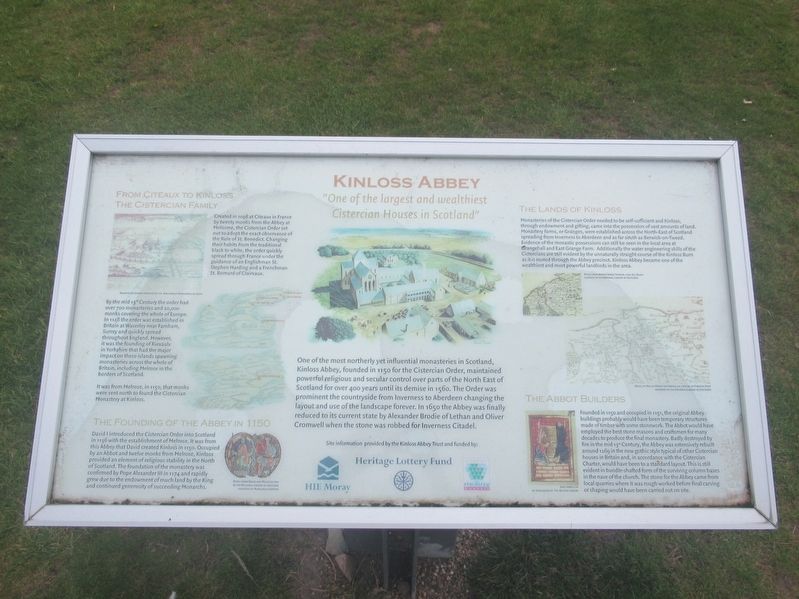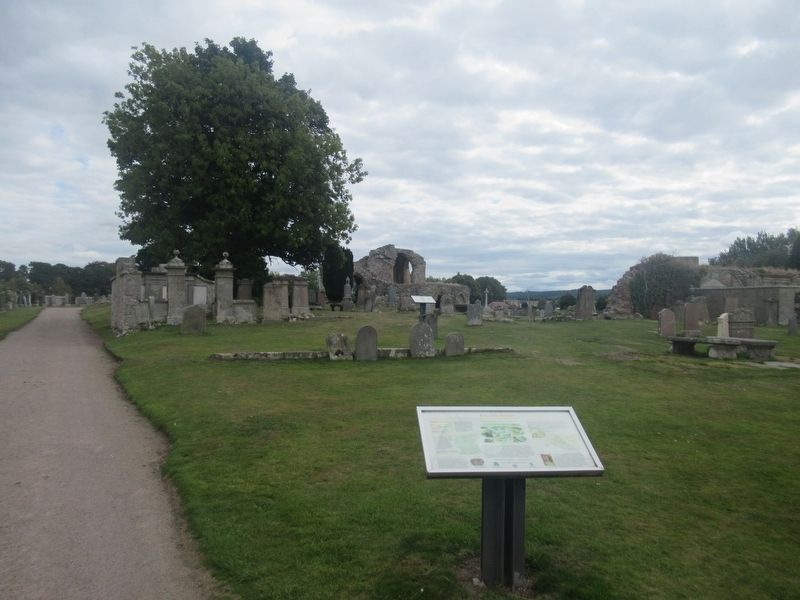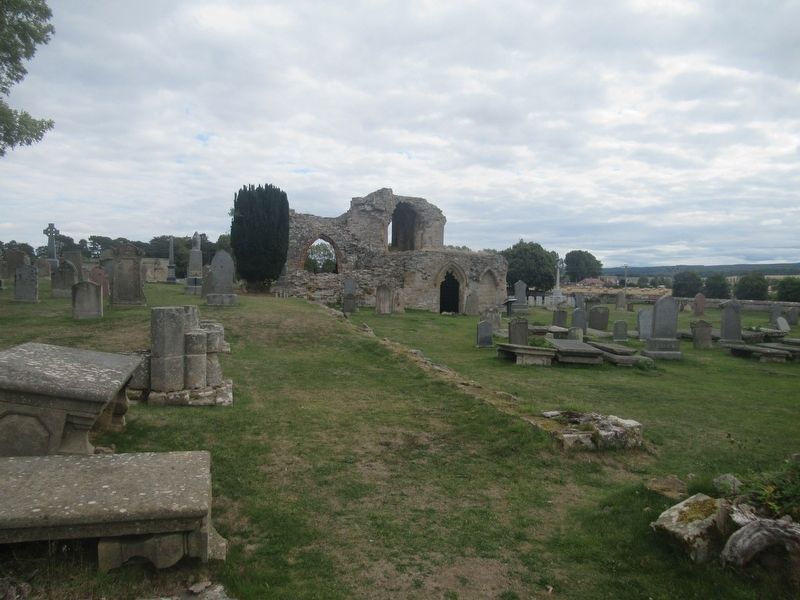Forres in Moray, Scotland, United Kingdom — Northwestern Europe (the British Isles)
Kinloss Abbey
“One of the largest and wealthiest Cistercian Houses in Scotland”
From Citeaux to Kinloss The Cistercian Family
Created in 1098 at Citeaux in France by twenty monks from the Abbey at Molesme, the Cistercian Order set out to adopt the exact observance of the Rule of St. Benedict. Changing their habits from the traditional black to white, the order quickly spread through France under the guidance of an Englishman St. Stephen Harding and a Frenchman St. Bernard of Clairvaux.
By the mid 13th Century the order had over 700 monasteries and 20,000 monks covering the whole of Europe. In 1128 the order was established in Britain at Waverley near Farnham, Surrey and quickly spread throughout England. However, it was the founding of Rievaulx in Yorkshire that had the major impact on these islands spawning monasteries across the whole of Britain, including Melrose in the borders of Scotland.
It was from Melrose, in 1150, that monks were sent north to found the Cistercian Monastery at Kinloss.
The Founding of the Abbey in 1150
David I introduced the Cistercian Order into Scotland in 1136 with the establishment of Melrose. It was fronm this Abbey that David created Kinloss in 1150. Occupied by an Abbot and twelve monks from Melrose, Kinloss provided an element of religious stability in the North of Scotland. The foundation of the monastery was confirmed by Pope Alexander III in 1174 and rapidly grew due to the endowment of much land by the King and continued generosity of succeeding Monarchs.
One of the most northerly yet influential monasteries in Scotland, Kinloss Abbey, founded in 1150 for the Cistercian Order, maintained powerful religious and secular control over parts of the North East of Scotland for over 400 years until its demise in 1560. The Order was prominent the countryside from Inverness to Aberdeen changing the layout and use of the landscape forever. In 1650 the Abbey was finally reduced to its current state by Alexander Brodie of Lethan and Oliver Cromwell when the stone was robbed for Inverness Citadel.
The Lands of Kinloss
Monasteries of the Cistercian Order needed to be self-sufficient and Kinloss, through endowment and gifting, came into the possession of vast amounts of land. Monastery farms, or Granges, were established across the North-East of Scotland spreading from Inverness to Aberdeen and as far south as Berwick-on-Tweed. Evidence of the monastic possessions can still be seen in the local area at Grangehall and East Grange Farm. Additionally the water engineering skills of the Cistercians are still evident by the unnaturally straight course of the Kinloss Burn as it is routed through the Abbey precinct. Kinloss Abbey became one of the wealthiest and most powerful landlords in the area.
The Abbot Builders
Founded in 1150 and occupied in 1151, the original Abbey buildings probably would have been temporary structures made of timber with some stonework. The Abbot would have employed the best stone masons and craftsmen for many decades to produce the final monastery. Badly destroyed by fire in the mid 13th Century, the Abbey was extensively rebuilt around 1269 in the new gothic style typical of other Cistercian houses in Britain and, in accordance with the Cistercian Charter, would have been to a standard layout. This is still evident in bundle-shafted form of the surviving column bases in the nave of the church. The stone for the Abbey came from local quarries where it was rough worked before final carving or shaping would have been carried out on site.
( photo captions )
- Drawing of Citeaux Courtesy of the Biblioteque Municipale de Dijon
- Detail from David and Malcolm Seal by The National Library of Scotland courtesy of Roxburghe Estates
- Detail from Moravia Scotiae Provincia, 1654 by J. Blaeu courtesy of The National Library of Scotland
- Detail of Map of Moray and Nairn, ca 1583-96, by Timothy Pont courtesy of The National Library of Scotland
Topics. This historical marker is listed in this topic list: Churches & Religion.
Location. 57° 38.038′ N, 3° 34.049′ W. Marker is in Forres, Scotland, in Moray. Marker can be reached from the intersection of Scotland Route B9089 and Scotland Route B9011, on the left when traveling west. Touch for map. Marker is in this post office area: Forres, Scotland IV36 3TL, United Kingdom. Touch for directions.
Other nearby markers. At least 8 other markers are within 10 kilometers of this marker, measured as the crow flies. Five Centuries in Kinloss (a few steps from this marker); The Cistercians of Kinloss (within shouting distance of this marker); Kinloss War Memorial (approx. 3.6 kilometers away); Findhorn Tercentenary (approx. 3.6 kilometers away); Benjamin MacLean (approx. 8.8 kilometers away); Burghead War Memorial (approx. 8.8 kilometers away); The Harvest Reaper (approx. 8.9 kilometers away); Fortune’s Beacon (approx. 8.9 kilometers away). Touch for a list and map of all markers in Forres.
Also see . . . Kinloss Abbey on Wikipedia. (Submitted on January 1, 2019, by Michael Herrick of Southbury, Connecticut.)
Credits. This page was last revised on January 27, 2022. It was originally submitted on January 1, 2019, by Michael Herrick of Southbury, Connecticut. This page has been viewed 133 times since then and 20 times this year. Photos: 1, 2, 3. submitted on January 1, 2019, by Michael Herrick of Southbury, Connecticut.


